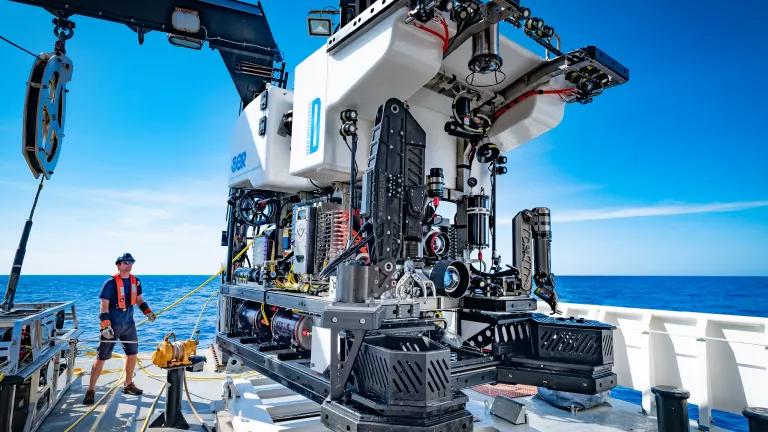This July 19, the National Ocean Policy turns four!
It marks four years of improved ocean governance and greater collaboration between the more than 20 various federal entities tasked with overseeing more than 140 laws that manage ocean issues – from sea level rise planning to offshore wind development to cleaner ocean waters and climate change challenges. It seems shocking to think that before the Policy, agencies with different goals and often conflicting mandates didn’t really plan together to proactively manage our nation’s waters, especially when the area of ocean controlled by the United States is greater than the country’s total land mass.
I’m still inspired Executive Order 13547’s stated mission: “To achieve an America whose stewardship ensures that the ocean, our coasts, and the Great Lakes are healthy and resilient, safe and productive, and understood and treasured so as to promote the well-being, prosperity, and security of present and future generations.” This is a huge task, but with so much at stake, we have no choice but to aim for this goal.
Our oceans fuel our weather and climate systems and provide a valuable source of protein. They give us every other breath we take. But that’s not all.
America’s oceans are economic powerhouses. Our more than $282 billion ocean economy contributes about 1.7 times the economic output of the nation’s farm sector and more than 3.7 times as many jobs. Much of this economic strength is from tourism, recreation, and fishing, which rely on healthy, functioning ocean ecosystems. It’s the smart choice to ensure that they continue to function productively. The National Ocean Policy is critical to the protection of these resources – for us, and for the future.
Like any four year old, the policy has built up a list of milestone accomplishments. A major success is last year’s release of an ocean action plan for how federal agencies will together tackle some of the major issues facing ocean life, such as ocean acidification, habitat protection, water quality, and pollution.
I’m also excited about the coordinated ocean planning work that’s taking place in the various regions of the country. Here in the Mid-Atlantic, representatives from the states of New York, New Jersey, Delaware, Pennsylvania, Maryland and Virginia, federal agencies with ocean responsibilities, the Shinnecock Indian Nation and the Mid-Atlantic Fishery Management Council have been working hard to develop a coordinated ocean plan to guide protection of our region’s ocean resources and their sustainable use. Everyone who uses and loves the oceans—fishermen, environmental organizations, shipping companies, coastal tourism businesses and members of the public—is being encouraged to help develop this ocean plan. We all need to encourage this coordinated ocean planning and help to identify areas off the Mid-Atlantic coast that are appropriate for different uses and those that need protection. The region’s ocean action plan should call out actions each of the participating agencies will take – using their existing authorities – to help safeguard important ecosystems for this and future generations to enjoy and use. Similar work is underway in the Northeast and Pacific Islands.
Just last month at Capitol Hill Ocean Week, White House Counselor John Podesta stated that the Administration is committed to getting regional ocean plans for the Northeast and the Mid-Atlantic out the door by the end of 2016. Great progress on these plans is unfolding and I and many others are appreciative for all of the work that the states, federal government, the public and various stakeholders are investing in developing these plans to protect and restore our oceans so that we can continue to swim, fish, enjoy and use our oceans and coasts for generations to come.
The National Ocean Policy is a common sense policy that coordinates activities in our ocean, so that we can make smarter choices for healthier, more productive resources, and stronger coastal economies. The policy is working, but it needs help from all of us to succeed. I encourage you to watch and share a short video describing this work and to visit http://www.nrdc.org/oceanblueprint for more information.




